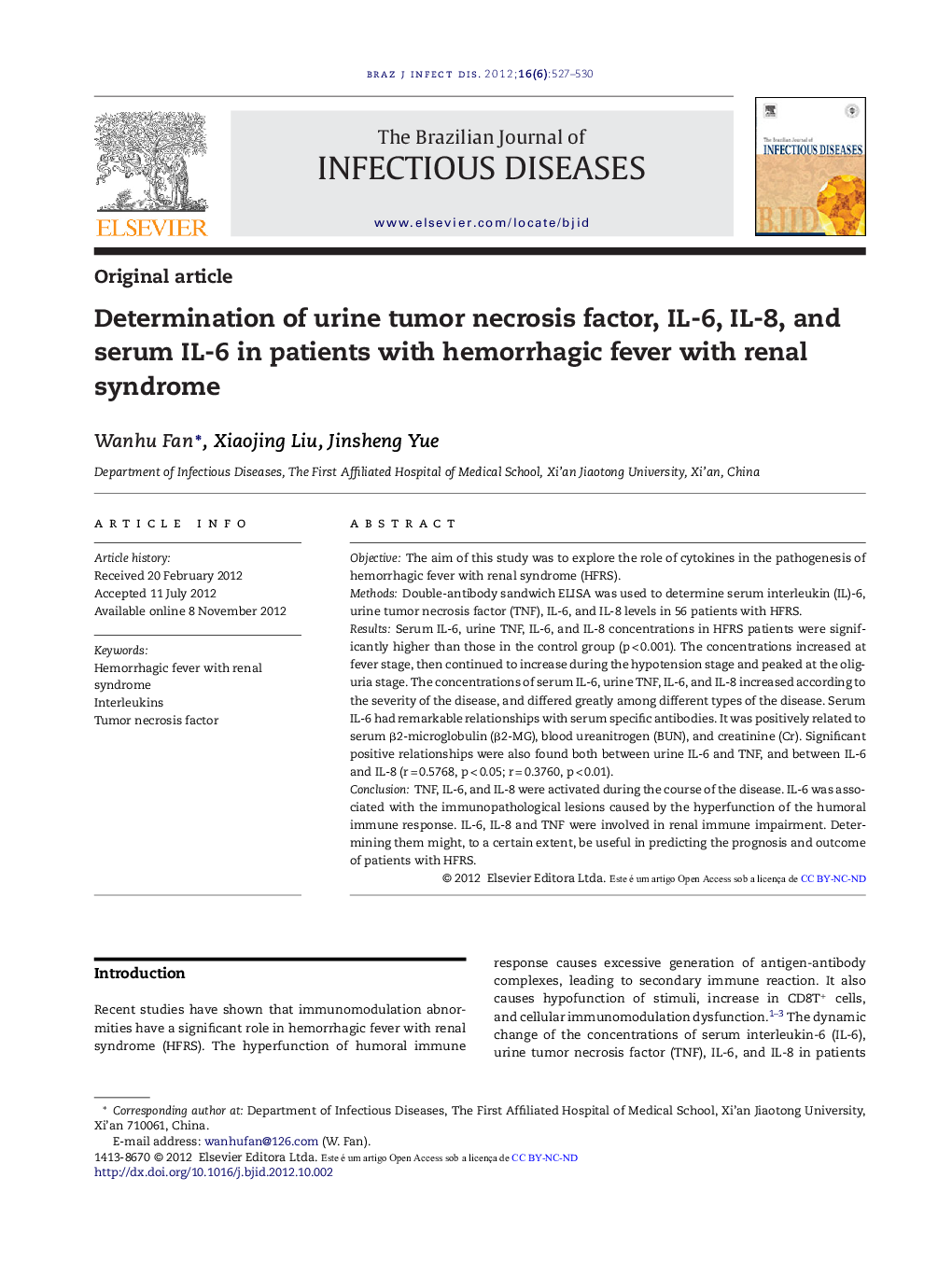| Article ID | Journal | Published Year | Pages | File Type |
|---|---|---|---|---|
| 3344304 | The Brazilian Journal of Infectious Diseases | 2012 | 4 Pages |
ObjectiveThe aim of this study was to explore the role of cytokines in the pathogenesis of hemorrhagic fever with renal syndrome (HFRS).MethodsDouble-antibody sandwich ELISA was used to determine serum interleukin (IL)-6, urine tumor necrosis factor (TNF), IL-6, and IL-8 levels in 56 patients with HFRS.ResultsSerum IL-6, urine TNF, IL-6, and IL-8 concentrations in HFRS patients were significantly higher than those in the control group (p < 0.001). The concentrations increased at fever stage, then continued to increase during the hypotension stage and peaked at the oliguria stage. The concentrations of serum IL-6, urine TNF, IL-6, and IL-8 increased according to the severity of the disease, and differed greatly among different types of the disease. Serum IL-6 had remarkable relationships with serum specific antibodies. It was positively related to serum β2-microglobulin (β2-MG), blood ureanitrogen (BUN), and creatinine (Cr). Significant positive relationships were also found both between urine IL-6 and TNF, and between IL-6 and IL-8 (r = 0.5768, p < 0.05; r = 0.3760, p < 0.01).ConclusionTNF, IL-6, and IL-8 were activated during the course of the disease. IL-6 was associated with the immunopathological lesions caused by the hyperfunction of the humoral immune response. IL-6, IL-8 and TNF were involved in renal immune impairment. Determining them might, to a certain extent, be useful in predicting the prognosis and outcome of patients with HFRS.
